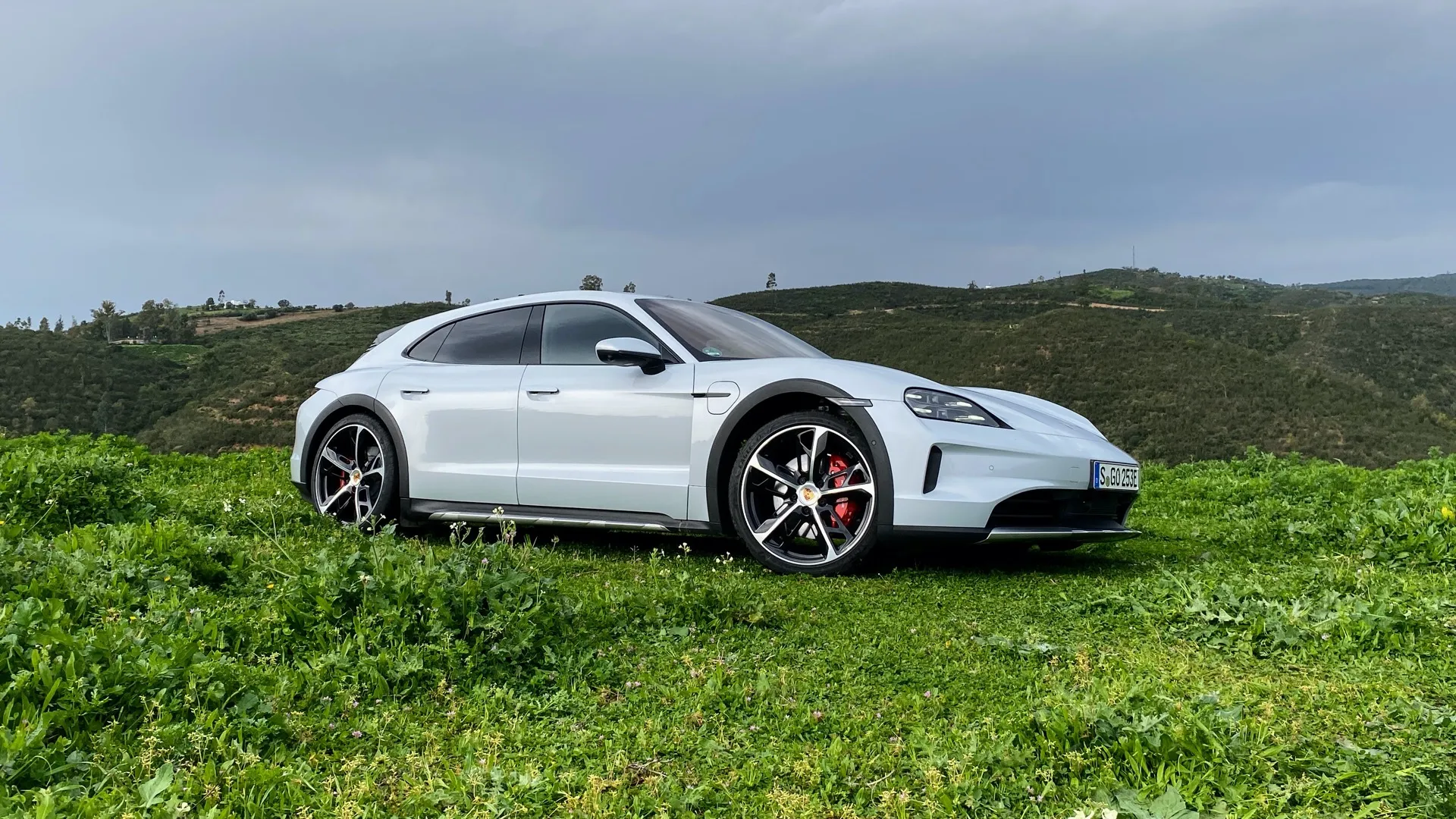Numbers alone aren’t what make a car thrilling or great. But they’re often what gets the conversation started.
When Porsche revealed its original Mission E concept, in 2015, it was in many respects a first-draft effort of what it needed to do to one-up Tesla, and it dropped some positively jaw-dropping numbers. Porsche focused on an eye-catching, low-set sedan design and claimed a driving range of just over 300 miles; 10-80% charge times in the vicinity of 15-20 minutes from an 800-volt system; a 0-62 mph time of 3.5 seconds; and a lap of the famed Nürburgring circuit in less than eight minutes.
Four years later it delivered the Porsche Taycan production model. It blew away the Mission E performance targets, and it brought a precision and poise not unfamiliar to Porschephiles but unlike anything ever offered at the time in an EV. But the things that were missing, by U.S. numbers especially, were remarkable range and efficiency—a foundation that the Taycan actually did exhibit in real-world American road-trip situations, but didn’t represent in test numbers.
More than another four years later, after nearly 150,000 Taycans sold globally, a second generation of the J1 platform underpinning the Taycan has arrived. The Taycan might look mostly the same, but with an extensive re-engineering Porsche finally has all the numbers down pat in a way that will let the grand-touring sports car shine.
2025 Porsche Taycan
More performance, more miles, faster charging
Porsche did exactly that: It left the Taycan’s design and packaging alone, but methodically went after efficiency and faster charging—plus, of course, greater performance. In a way that only a German engineering-driven automaker would, Porsche breaks down its effort on the Taycan in terms of actual money spent on development cost, showing that 70% went toward performance, efficiency, and charging.
The starting point for an EV revamp might as well be the battery. Here the gross battery capacity has risen from 93.4 kwh in the former Taycan to 105 kwh (with 97 kwh of usable capacity), thanks to more energy-dense cells, while the overall weight of the battery pack has fallen 20 pounds, to 1,375 pounds.
Across the board, Porsche has boosted range by about 35%. It says about 14% of that range is due to the increase in battery capacity. But the impressive part follows: 5% of the improved range comes from improved drivetrain efficiency; 4% comes from optimized recuperation; and 11% comes from “whole vehicle optimization,” including mass, aero, and rolling resistance.
Porsche also redid the thermal management in the Taycan, opting for a higher-power 800-volt climate compressor plus a heat pump that’s used 100% of the time for interior heating. Battery heating is possible to boost efficiency in colder climates, Porsche says, while excess heat from the battery can go toward heating the cabin.
Sampling the range of the Porsche Taycan experience
All these changes have pushed the Taycan performance envelope higher, too—to a bewildering 14 combinations in the lineup, with the addition of Taycan Turbo GT models that make 1,093 hp in their Attack Mode. While I got those out on the track—more to come, next week—I spent nearly five hours of time between the 4S Cross Turismo and base Taycan sedan on public roads in Southern Spain.
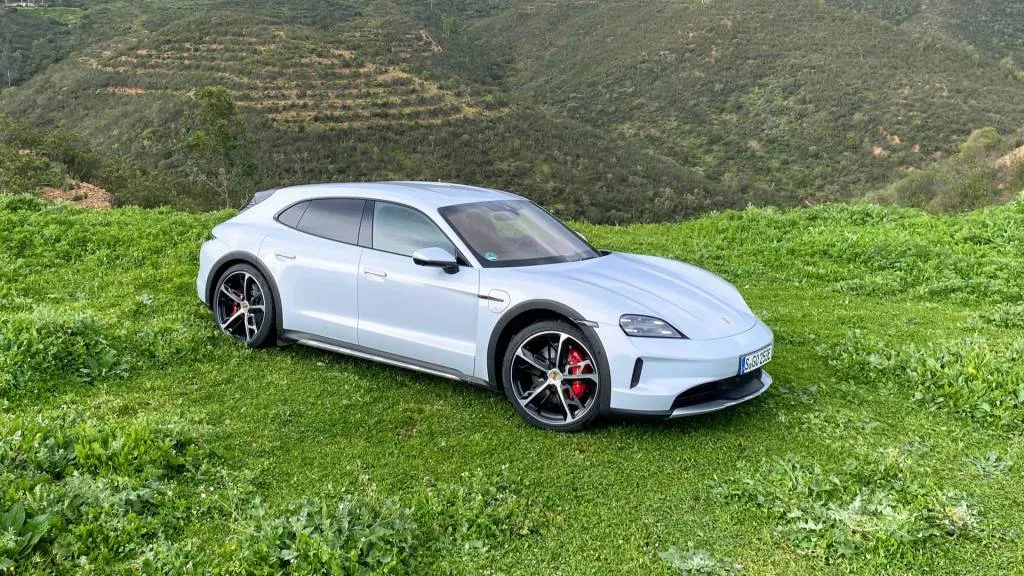
2025 Porsche Taycan
Most of my drive was in a Taycan 4S Cross Turismo, delivering 509 hp and 490 lb-ft of torque—or 590 hp and 523 lb-ft with launch control. This particular all-wheel-drive combination assures a 0-60 mph time of 3.6 seconds and top speed of 149 mph. With the base Taycan 4S Cross Turismo starting at $127,195, this one was loaded with the Sport Chrono package that enables a push-to-pass burst of power, rear-axle steering, “thermally and noise insulated glass,” four-zone climate control, Bose surround sound, and various cosmetics and comforts. I started to price this out and lost track north of $150,000 in Porsche’s U.S. configurator.
The 4S Cross Turismo is one of the heavier Taycans in the lineup, with a curb weight of 5,093 pounds. Its 0.8 inches of additional ride height is good for trail access if you choose your line carefully. And in versatility, it’s way more useful, with 15.7 cubic feet of cargo space with the rear seatbacks in place (versus 12.9 in most Taycan sedans), or 42.8 cubic feet with them folded in the Cross Turismo. The frunk remains the same deep 2.9 cubic feet across versions.
Cross Turismo models pay for that with a less aero-savvy coefficient of drag of 0.26 or 0.27, up from 0.22 or 0.23 for the sedans, and once again that’s likely to mean a few miles of range sacrificed. Porsche has also subbed in new wheels, evolving from wheels that were rooted in the look of the original Mission E concept to an aero design that buys an extra 40 km to WLTP ratings, according to the automaker.
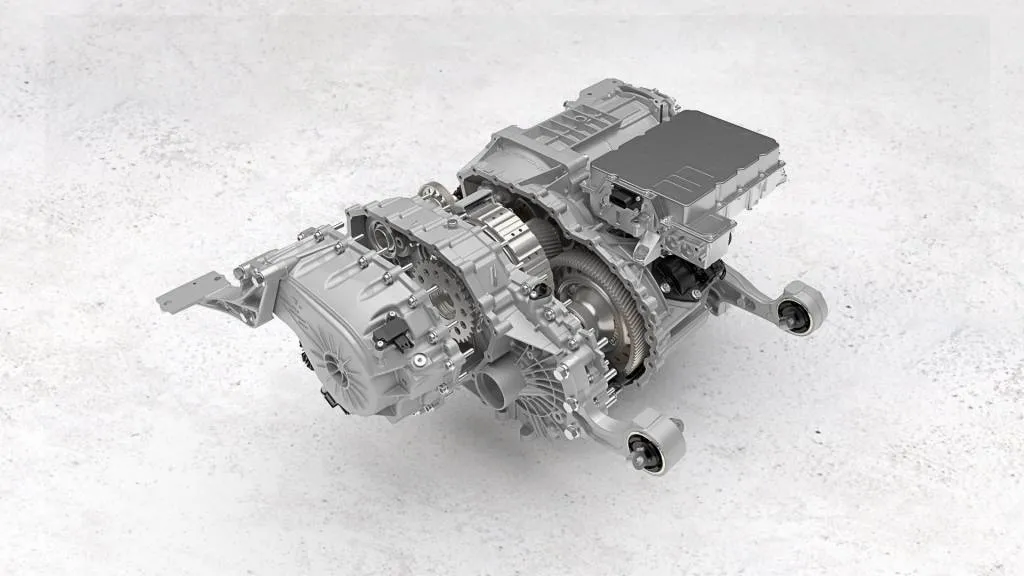
2025 Porsche Taycan
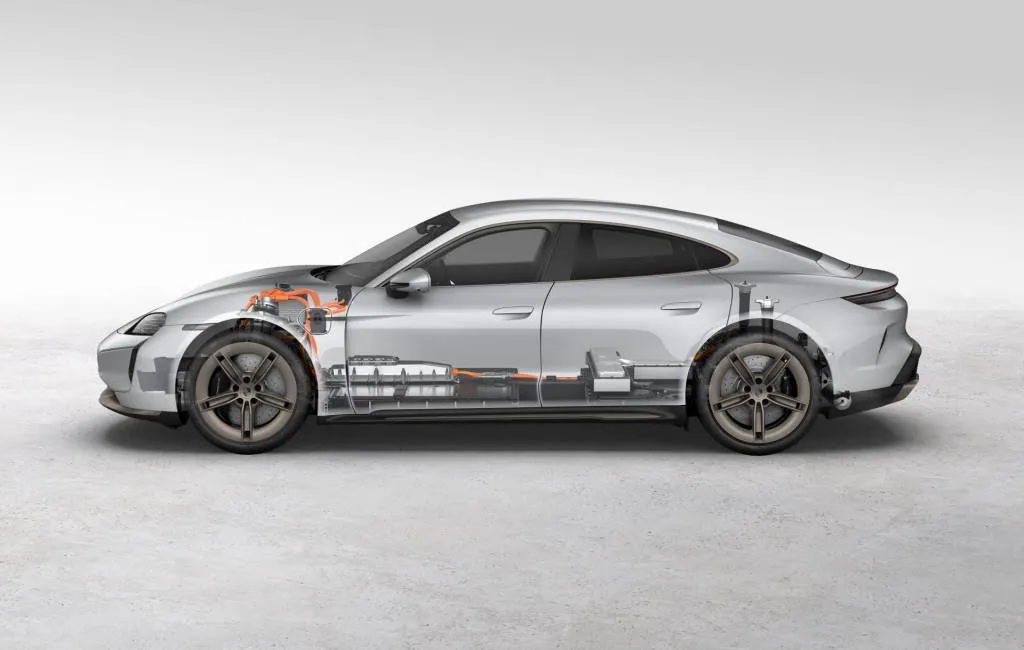
2025 Porsche Taycan
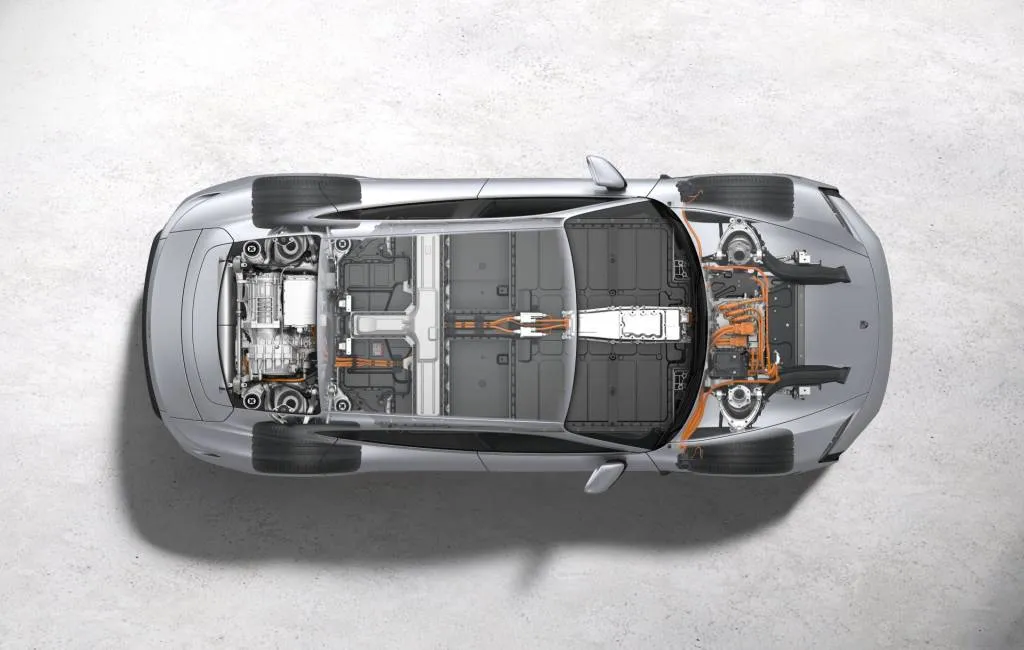
2025 Porsche Taycan
All Taycans have a two-speed dog-ring gearbox at the rear wheels that saves the low range for launch control and bursts of stronger acceleration. For the test 4S, the couple times we triggered the lower gear brought a satisfying surge, as traction systems expertly managed distribution and delivery to the tires. Powertrain sounds can still be turned on or off and while those in the Taycan are among the least obtrusive, sounding a bit like a whirring flat-six spaceship, I generally opt to hear the real sounds of the powertrain—which hear is the faint whistling of the motors and distant gearbox sounds.
Ride-and-handling wizardry, mostly optional
Porsche has introduced a new rear motor unit for the lineup, and while recuperation is stronger (up to 400 kw), Porsche has also allowed for stronger brake cooling. All models in the lineup—even the base rear-wheel-drive Taycan I drove later in the day—come with a very fast-reacting air suspension, while a fully active suspension called Porsche Active Ride is optional. According to Porsche, it’s the most advanced combination of chassis systems available at the brand, with active dampers and custom force generation at each wheel, incorporating dynamic leveling, skyhook damping, and active tilt and active roll functions. The latter two, including behavior that effectively leans the car into corners, can be enabled or disabled to suit, thankfully; they’re comfort-oriented features that may make the ride a bit less upsetting for the passenger but feel rather disconcerting to the driver.
The active suspension’s a willing partner, but not perfect. The system tends to soak up the sort of choppy, heaved surfaces on curvy backroads or rural highways and neutralize some of the minor back-and-forth head-toss, easing fatigue. On the other hand, the compensation seems to come at a cost—of a more vague steering feel on center.
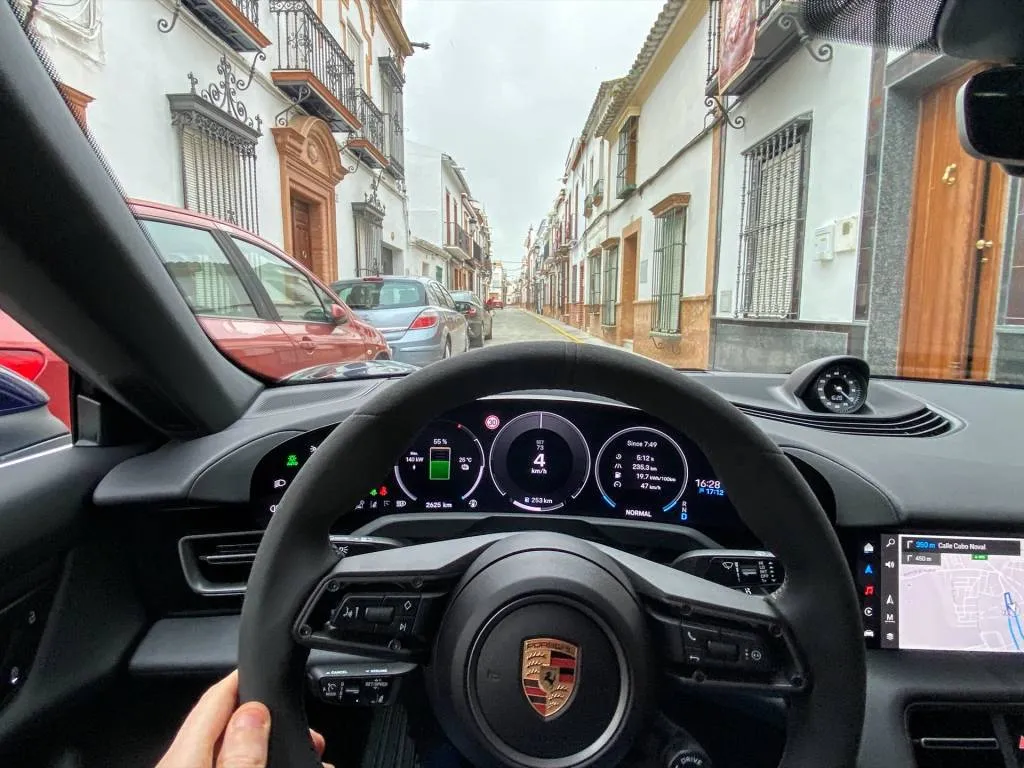
2025 Porsche Taycan
The system comes with a Comfort Entry Height feature that, in a fraction of a second, when you crack the door open, raises the height of the vehicle by an inch or two, allowing an easier height for getting in or out.
The Taycan is a four-seater, but you’ll need to be prepared for some realities if you’re getting into the back seat. Sliding under the roofline and into the front or back seat is the easy part—easier than a Lucid Air and its roof and header which curl down, for instance—but the rear positions require some knee-and-foot strategy. To fit 6-footers behind 6-footers, you’ll need to tuck your feet sideways at first, then wedge them under the seat ahead. It makes getting in and out a little more challenging, but once in there it’s fine.
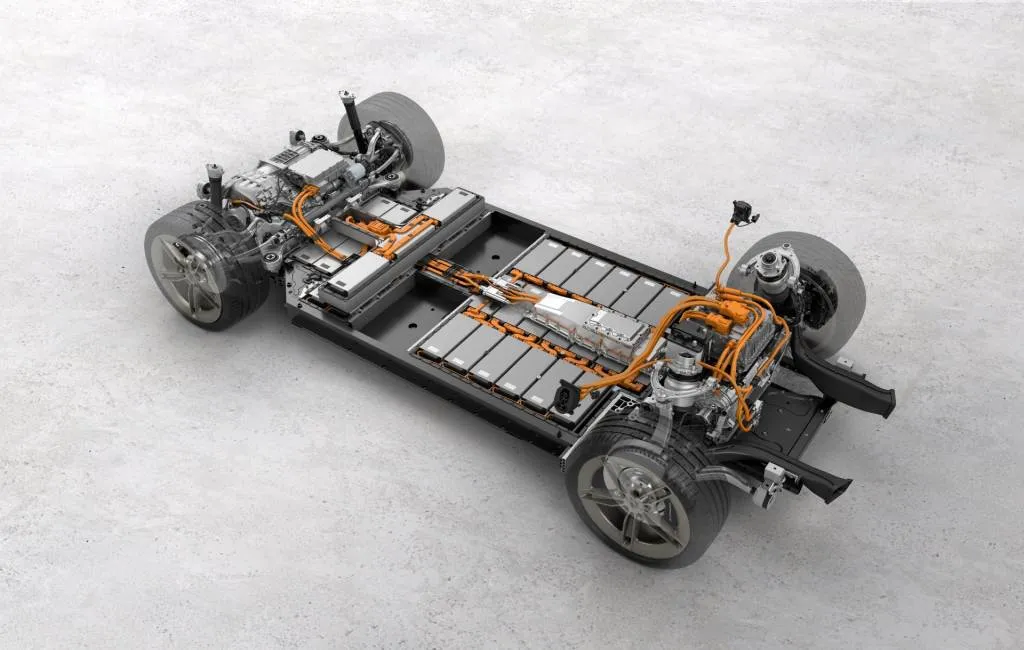
2025 Porsche Taycan
Porsche Taycan charging: It’s easier to catch the curve
By raising the maximum charge current to 400 amps, from 336 amps, Porsche has lifted the power of the entire charging curve, allowing a peak 320 kw as you near a 50% charge and, ideally, more than five minutes of it above 300 kw, if you start at a low enough percentage and utilize charge preconditioning. Fast-charges can now start at 15 degrees C (59 degrees F), versus 35 degrees C (95 degrees F), which greatly reduces the time to precondition the pack and increases the chance you’ll be able to grab onto a spot on the speediest charge curve available for the charging hardware you’re using.
Despite a larger battery capacity, the Taycan now can charge from 10-80% in 18 minutes, versus 21.5 minutes originally. Porsche notes that at a battery temp of 15 degrees C the Taycan used to take 37 minutes to get from 10-80%, but now it’s also part of the 18-minute span. And now, all Taycan models can charge at 150 kw when encountering the occasional old-tech charger running only at 400 volts, while an 11-kw onboard charger is good for an overnight charge. The Taycan has AC charge ports on either side of the vehicle, but the DC fast-charging port is only on the right side.
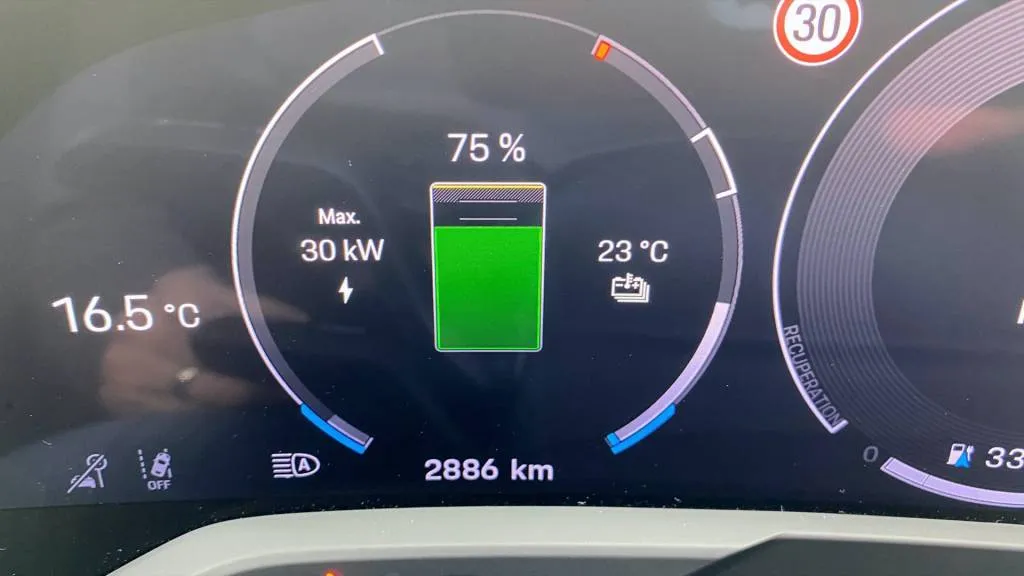
2025 Porsche Taycan
Although our route and state of charge didn’t permit plugging into one of the Ionity fast-chargers in the region, Porsche insists it’s now as easy as following what your car says it can charge at in the gauge cluster. With the Taycan’s revised readouts, the charging numbers when drivers plug the charge connector into the car will no longer be so surprising. While driving to a charging station with the charge planner active, a gauge shows the maximum charge power possible at the battery’s state of charge, while a temperature readout shows when it’s at the optimal temp to accept that. While charging, it also keeps tabs on the battery temperature, and a bar on the left allows drivers to see clearly when the charge rate is limited by the charger as opposed to the vehicle.
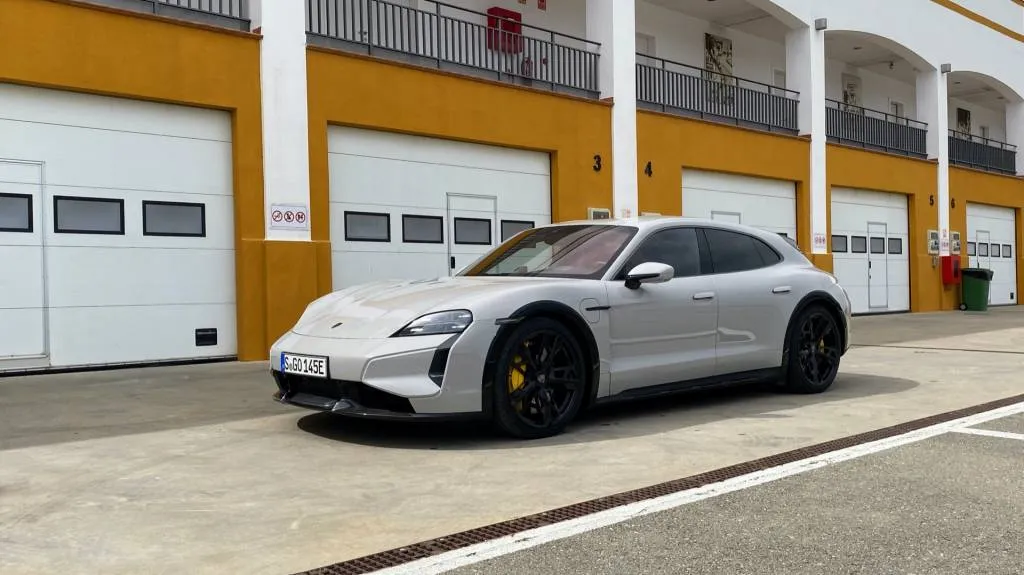
2025 Porsche Taycan
Taycan impressions: Think low sports car plus touring comfort
The impression from some distance away might suggest this Taycan is an electric Panamera—more of a luxury sedan than a sports car—but you’re proven wrong once you slide behind the wheel.
From the driver’s seat, the hoodline is low, the layout of the instruments communicates in sports-car overtones, and the combination of precise, communicative steering and a center of mass just below and behind you speak an undeniable truth that this car was conceived as a disciple of the 911.
That, and on tight curves, the combination of rear-axle steering, chassis systems, and active suspension altogether seemed to erase the thought of this wagon’s 5,000-plus pound weight. This is one of very few EVs on the market in which you feel like you’re sitting with the battery pack’s mass rather than on it.
You still have no paddles in the Taycan, or any easy way of modulating regen other than with the brake pedal—where brake blending is mostly smooth but occasionally juddery in the handoff between motors and friction pads. Hit the recuperation symbol on the screen and you get “Off,” “On,” and “Auto” settings. Off gently slows the vehicle, more than neutral but not even as much as a gasoline vehicle in top gear. On ramps regen up to feel as if you’re in a somewhat lower gear, but it’s nothing close to one-pedal driving. Auto studies traffic ahead with active-safety sensors and fine-tunes it to reduce the need to use the brake pedal.
One-pedal driving has its ardent fans, but I’m not one of them, and I found the Taycan easy to drive smoothly on curvy roads in its regen mode, while I switched over to Auto in small-town traffic and turned it off on the motorway.
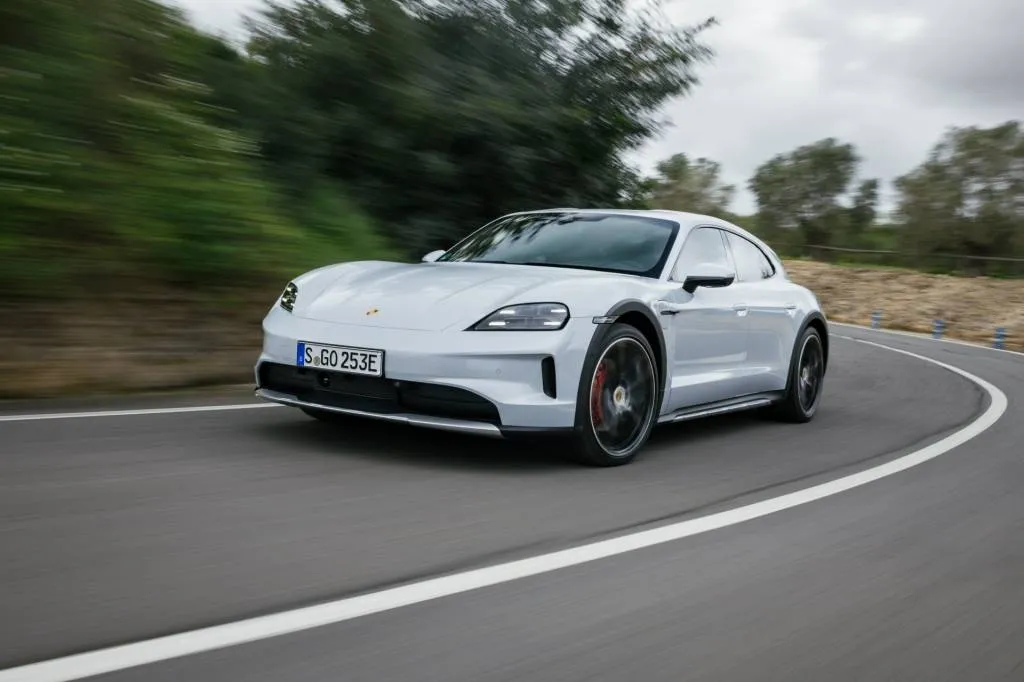
2025 Porsche Taycan
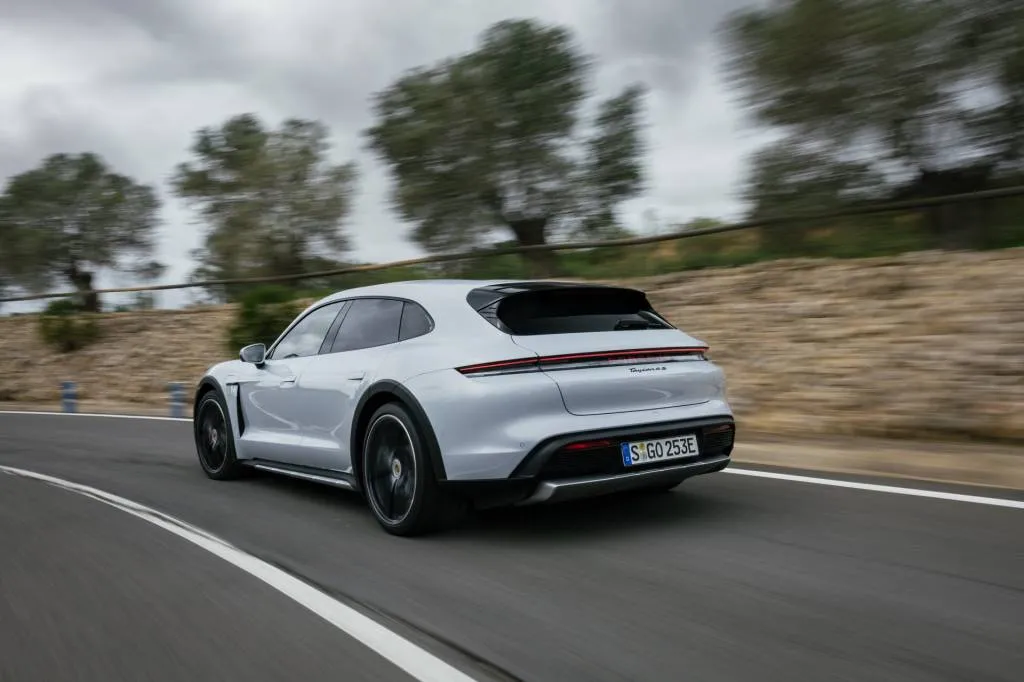
2025 Porsche Taycan
Visual differences between the 2025 Taycan and previous models aren’t all that profound. Front and rear styling has become sharpened at a few key points (around the front corners of the car is one), while new exterior colors and upholsteries freshen things up. Turbo models are a little more differentiated by their distinct front upper styling and more aggressive side skirts, plus badging differences. Porsche also offers, as optional, a “Porsche” light strip at the rear, and soft-close action for all four doors is now offered.

2025 Porsche Taycan
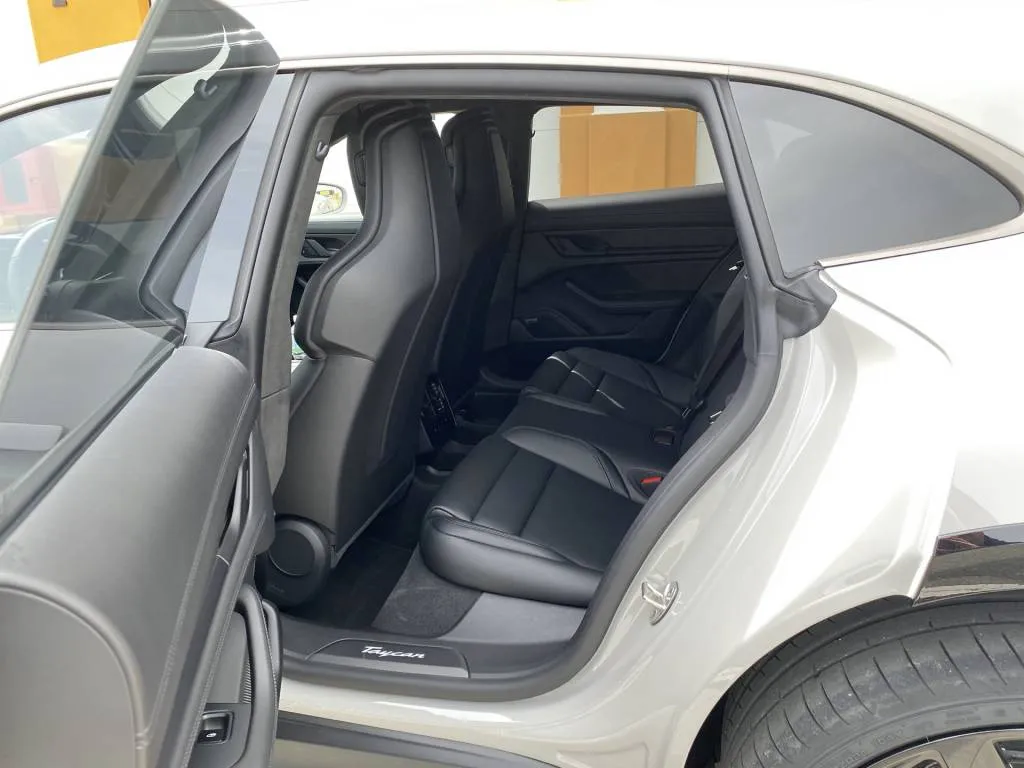
2025 Porsche Taycan

2025 Porsche Taycan

2025 Porsche Taycan
Wireless device charging has been stepped up to 15 watts, with active cooling, and because of a new polarized passenger-side screen that’s nearly impossible to see from the driver’s seat, video streaming is now allowed while driving. Passengers can still opt to play co-driver with gauges and control readouts echoed on their side, but as I found with some time in the passenger seat, it’s a little much.
For either of the infotainment screens, Porsche still offers top-notch Apple CarPlay integration, and according to the automaker it’s been “even more deeply integrated” into displays, with the potential to tap into the battery’s state of charge for Apple Maps directions and more.
Less can be more in this EV lineup
The Taycan lineup is indeed complex, and it can get mighty expensive—and 2025 Porsche Taycan pricing got significantly higher than before. But now, as before, some of the gems are at the affordable end of the lineup.
The base Taycan I spent the last couple hours of the day with, after the track, with a relatively short list of options over the $101,395 base price and some nice-looking 20-inch wheels among the upgrades, felt like a perfect performance-flavored EV for eating up the miles efficiently on the open road.
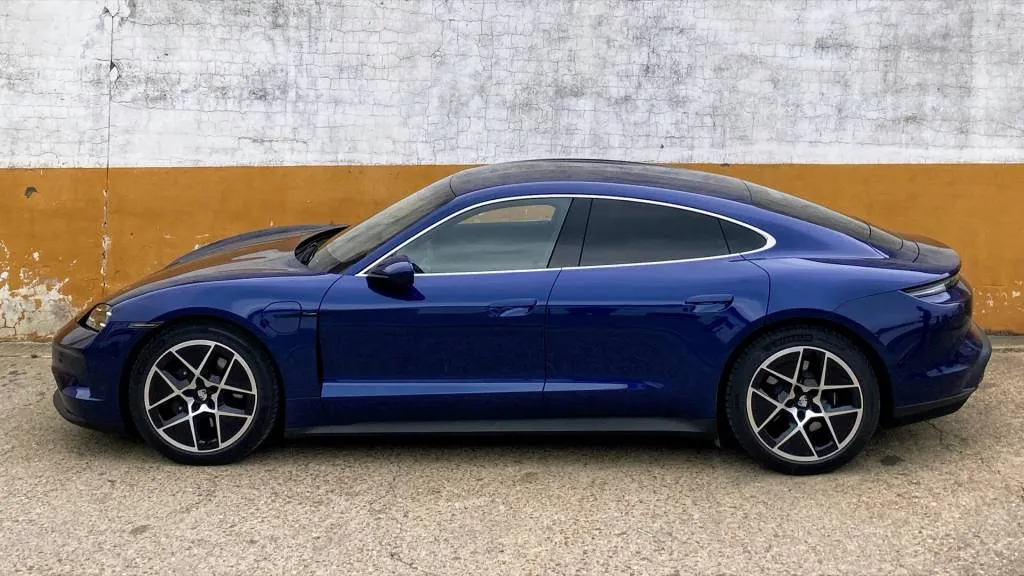
2025 Porsche Taycan
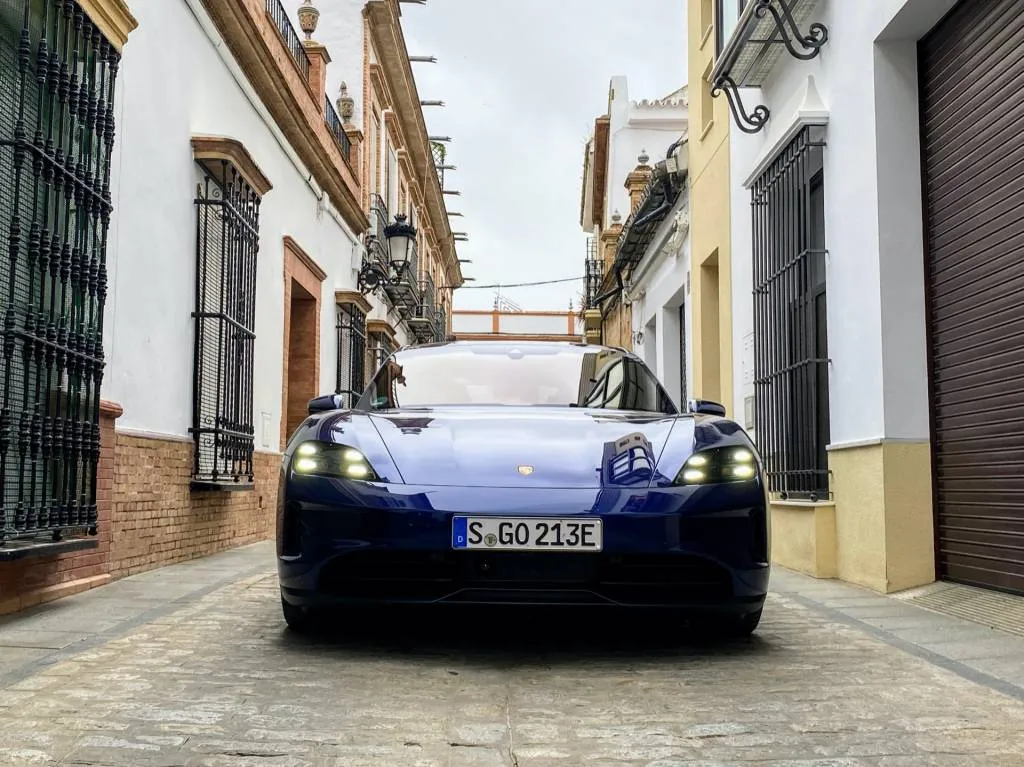
2025 Porsche Taycan
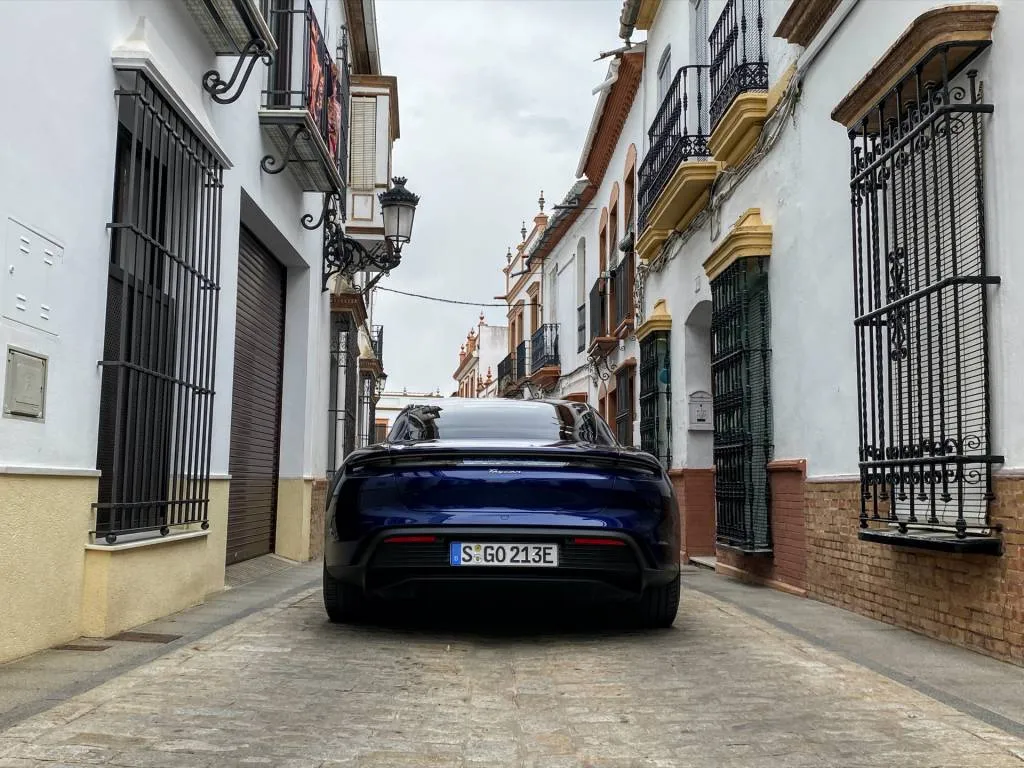
2025 Porsche Taycan
It delivers 402 hp and 272 lb-ft, with torque boosted to 302 lb-ft with launch control, and it has a 0-60 time of 4.5 seconds and top speed of 142 mph. In acceleration, it’s a big boost versus last year’s 5.1 seconds.
It’s also the model in the lineup that’s the most certain to top 300 miles of EPA range—yes, for real this time, Porsche suggests, although final numbers aren’t here yet.
This base car actually offered my favorite interior of the day—a pepita-checkerboard cloth offering all the support of the higher-priced models but with a dash of vintage-911 charm.
With the air suspension but without the Active Ride system, this car felt completely different on the road, with a precise, natural on-center feel, a linearity to its inputs, and very well-blended brakes as we headed into Seville traffic.
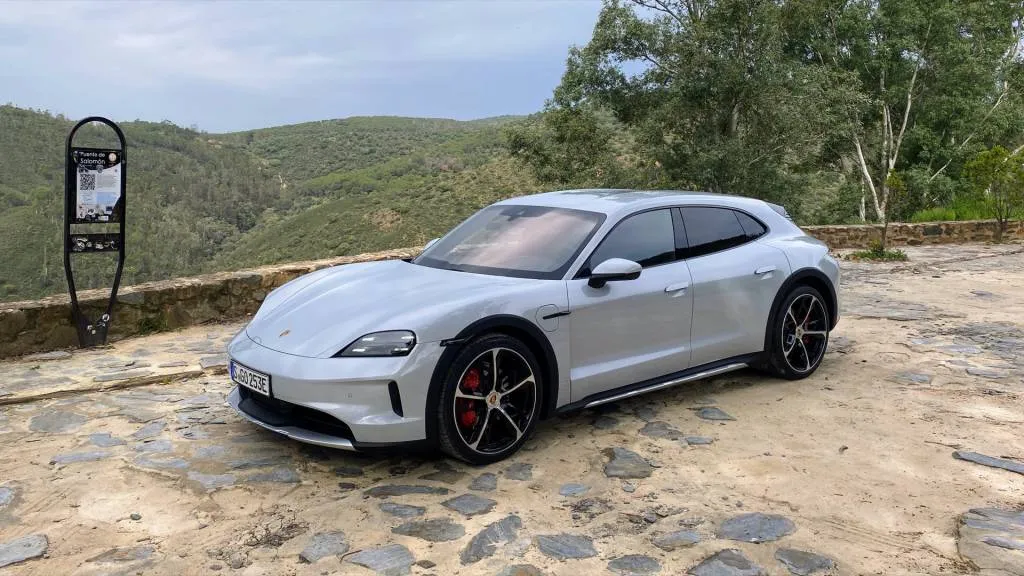
2025 Porsche Taycan
Mission complete?
The Porsche Taycan hasn’t changed all that much in its seating, cabin layout, or interior trims, although in numbers that matter, it now meets or beats the idea of the Taycan that was originally presented in pretty much every respect—not just performance. Now it’s on to more EVs in the lineup, and it’s just before the arrival of Porsche’s second EV, the Macan.
The Taycan has always felt like an ideal long-distance electric grand-touring car that’s more rewarding to drive than a Model S or other alternatives. And now in actual numbers, infrastructure permitting, it has the range and speedy-charging assurances to support that.
—
Porsche covered some travel and accommodations in order to provide vehicle access for review purposes.

